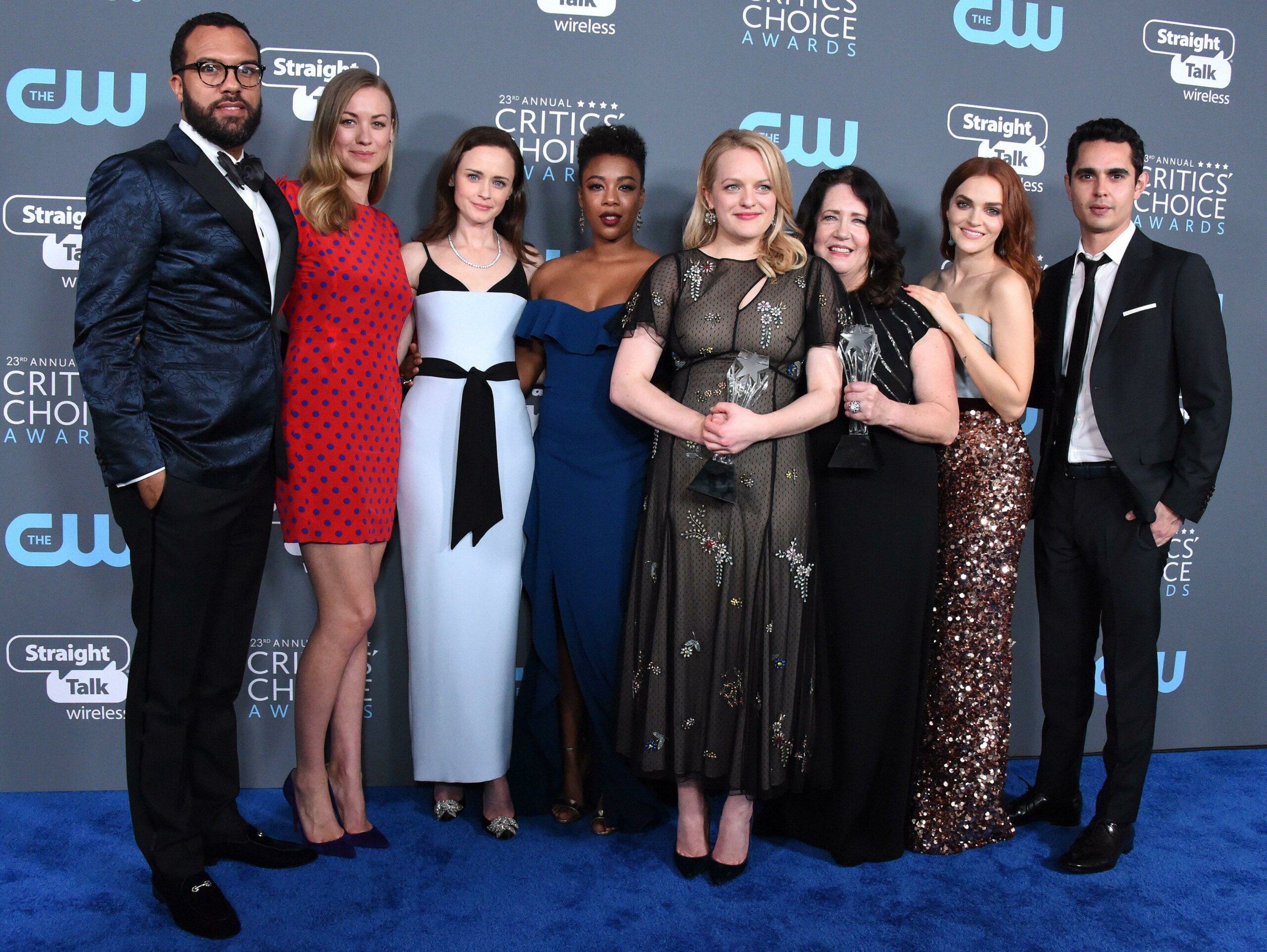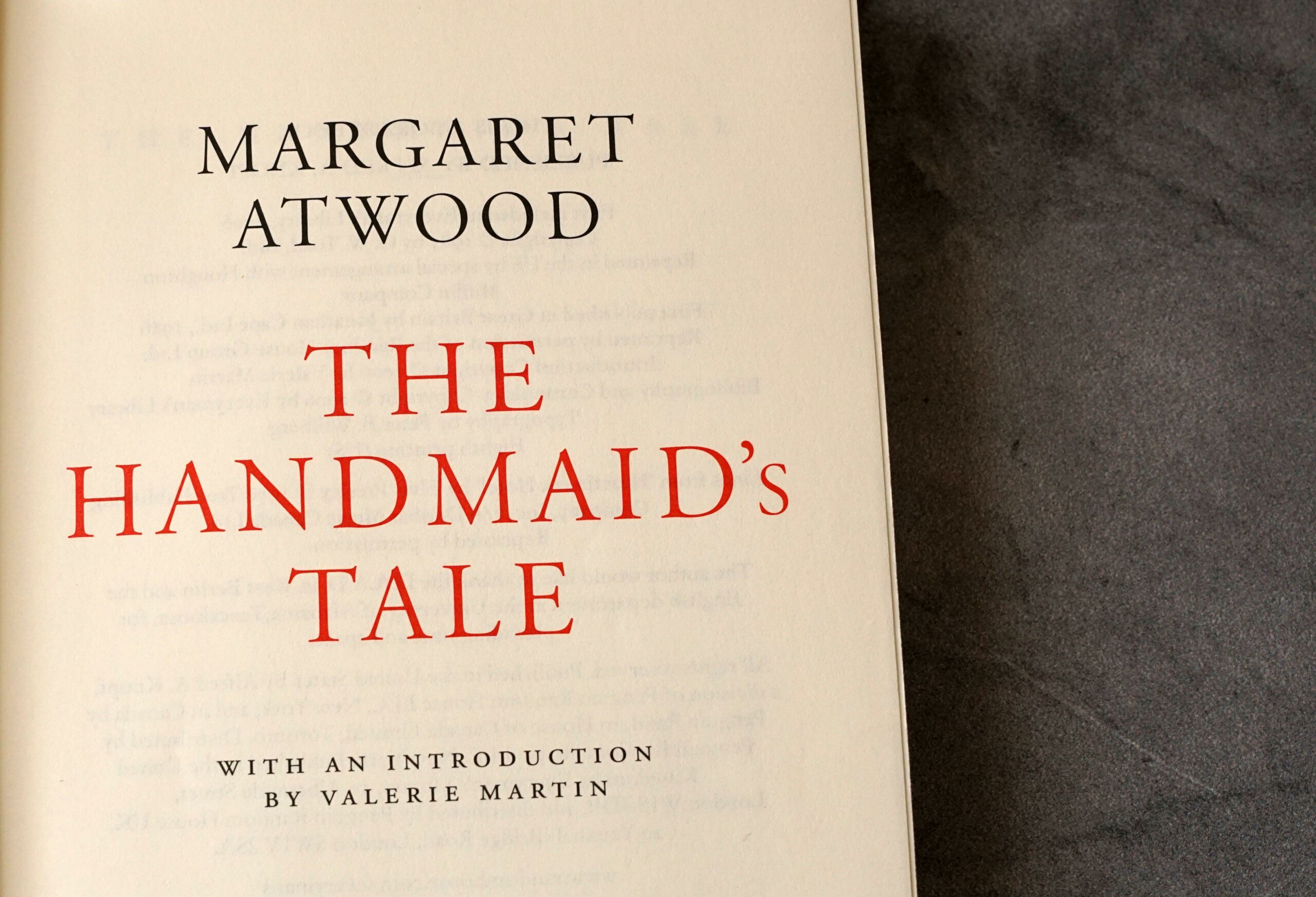‘The Handmaid’s Tale’: The Issue with Book-to-Screen Adaptations
Written by Mitchell Tapner on 29th May 2024
By Lucy Crawley
Margaret Atwood’s ‘The Handmaid’s Tale’ is a dystopian story, written in 1985 and set in the early 2000’s. The original novel is told through a first-person perspective, effectively conveying the deteriorating mindset of the narrator, Offred, that is inflicted by the harsh theocratic regime that the book focuses on. In 2017, the TV adaptation of the story was released on Hulu and has since been subject to widespread acclaim; winning the Outstanding Drama Series Emmy in 2017, its success is clear.

The Handmaid’s Tale cast at the 23rd Annual Critics’ Choice Awards. Photo credit: Alamy
However, the shortcomings of a show shouldn’t be ignored. Both praise and scrutiny can exist cohesively, without one diminishing the validity of the other. The general complaints of a book adaptation can be heard- perhaps some perceive ‘The Handmaid’s Tale’ as too long, too boring, or simply not to their own personal taste. Whilst these are valid complaints, the opinions of a few disappointed individuals don’t really degrade the value of a show or determine whether someone avoids watching it. The deeper issue lies in something that television is notorious for, that many forms of media beyond ‘The Handmaid’s Tale’ are guilty of; the glorified portrayal of the appearance of characters.
In order to appeal to the masses, a series must fit a certain criteria. It should be emotional without being overwhelming, entertaining without being repetitive, and stay true to its novel’s original intentions. For the most part, Hulu’s ‘The Handmaid’s Tale’ tackles these demands. The distinguished acting aligns with the dramatic plot to form an emotionally evoking story. Any straying from the plot of Atwood’s novel only adds to the show’s depth and is carried out thoughtfully and with respect to the original storyline. One element that is consistent throughout both book and screen is the protagonist’s narration, which supplies the reader and viewer with a constant stream of Offred’s thoughts, emotions and reasoning. Overall, it’s an impressive adaptation of a classic book.

Title page inside a copy of The Handmaid’s Tale by Margaret Atwood. Photo credit: Alamy
Another -often unspoken- demand of television is the appealing appearance of characters. Subconsciously or not, individuals are naturally inclined to watch a show in which the characters can be deemed as desirable; producers play into this to generate success, and ‘The Handmaid’s Tale’ is no exception. In Atwood’s novel, characters are described outspokenly and blatantly. Fred Waterford, for example, is not written to be an attractive man; “If he were better looking would I enjoy this more?”. Being “thin-faced” with “silver hair”, Waterford is clearly characterised as utterly unappealing, and the actor, Joseph Fiennes, doesn’t exactly fit this description. Similarly, the character of Serena Joy is written to have a nose “too small for her face”, a face that was ‘not fat but large’, and a chin “clenched like a fist”. Again, Yvonne Strahovski doesn’t match this character. Being based on a feminist dystopian novel, it would be expected that the series would intently deter from this common fault rather than catering to a superficial society- however, hypocrisy runs high and this isn’t the case.







